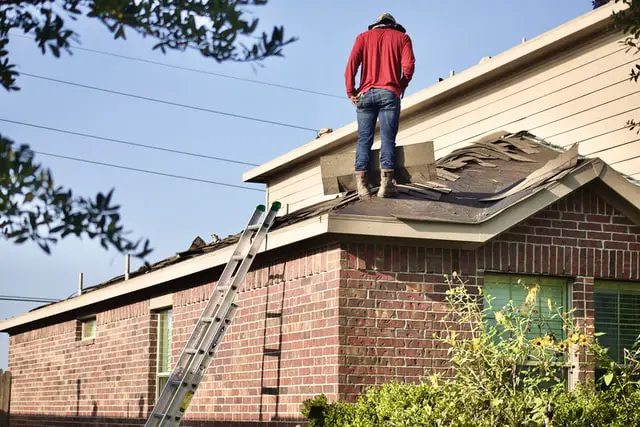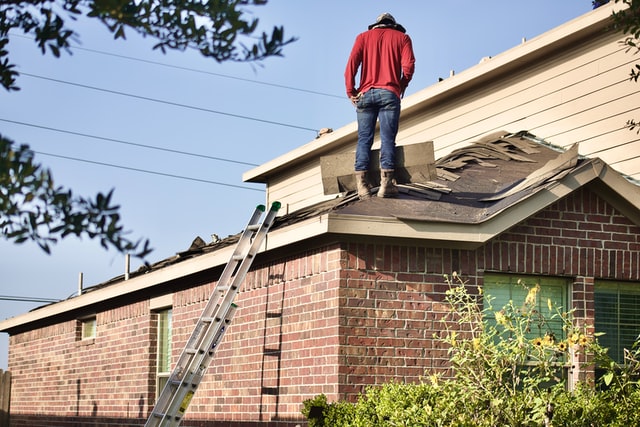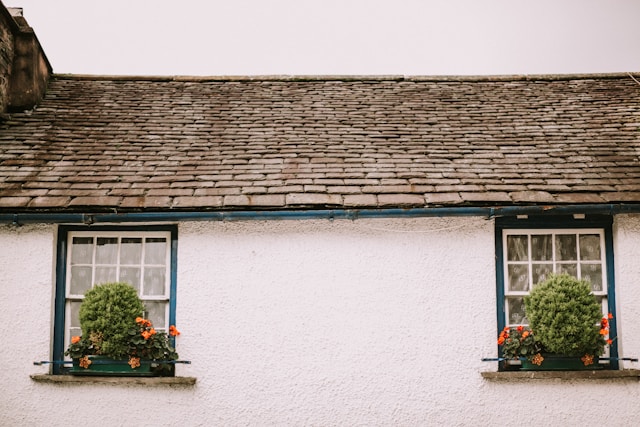Be honest – how often has your first glance at a house stopped at the top of the walls below the roofline? Honestly, how often have you looked higher and taken stock of the condition of the roof? How often has the colour, material and condition of the roof influenced your overall impression of a house? And have you looked at the condition of the guttering edging the lower part of the roof? Is it well maintained and firmly attached to the roof edging or missing brackets or broken in places?

Is it just the roof which is in need of repair – or other matters as well?
You may well be thinking that these are nonsensical questions, but I ask them for a very good reason. A roof which is clearly in need of repairs or has been visibly neglected may point to far more serious issues within the house itself, as well as general neglect which could give rise to many other problems down the line. Since roofs are intended to keep moisture and heat where they belong – on the outside of the building – it is a reasonable assumption that a roof which is in need of repairs is not doing its job as intended.
Watch out for signs of water leaks – from below, the walls or the roof
Issues arising from moisture ingress within a house are far more extensive and problematic than one might suppose. Moisture seepage into a house causes more than just an unpleasant damp smell and bubbling paint on the interior walls; it also leads directly to the growth of mould and damage to the structural integrity of the building itself.
Never underestimate the harm that mould can cause to your health
Mould itself is a far more deadly problem than most people realise. Breathing in air laden with the spores released from mouldy walls and ceilings can lead to many health problems. Medium- to long-term exposure to mould spores, even in smaller numbers, can lead to allergic symptoms such as sneezing, itching, watery eyes, coughing, runny nose, wheezing, difficulties in breathing, headaches, and general fatigue. Damp and mould together can result in respiratory problems and infections, allergies and asthma, or a compromised immune system.
Whatever roof a house has – check it thoroughly for signs of damage
Moisture can steadily (and often unobtrusively) seep into a building from faulty foundations, cracks in or degradation of the walls, or from leaks from a damaged roof. Because most houses have ceilings between the floor and the roof itself, a slow and steady leak may take time to become evident. Whilst roofs have a waterproof plastic lining installed between the roof trusses and the outer casing (either interlocking slate, concrete or clay tiles, aluminium, or zinc corrugated sheeting), extreme heat and cold will, over time, make the plastic brittle and unable to perform to optimum efficiency, which could allow water penetration into the interior if the roof is not 100% watertight. Metal roofs are more lightweight than roof tiles, are naturally fire resistant as they are non-combustible, require little maintenance, have a long life and are environmentally friendly, as well as being able to reflect outside heat away from the interior, thereby keeping the inside of the house cooler during the hotter months. Many houses are now being built using metal roofing, which may not look as classy or timeless as traditional tiles but will easily stand the test of time as well as increasing energy efficiency by up to 20%. Tile roofing is still a popular choice for many due to its stylish appearance although this type of roofing is heavy and requires additional structural reinforcement to support its weight. The plastic under-sheeting also needs to be carefully maintained to prevent leaks entering the house through any cracked tiles.
Horses for courses – choose your roof carefully and wisely
There are definite pros and cons to any kind of roofing choice, and the final decision must be made according to need, cost and economy. In high-wind areas, tiled roofs are more likely to sustain damage than metal sheeting which has been properly and skillfully installed. Both metal and tile roofs can be painted in any colour appropriate to the general style of the house and only specialized paints should be used for this purpose. Be aware, though, that no paint will last forever, and eventually it will fade or even start to peel, which will obviously decrease the curb appeal of your home, so be sure to have it checked, repaired, and repainted when required.

